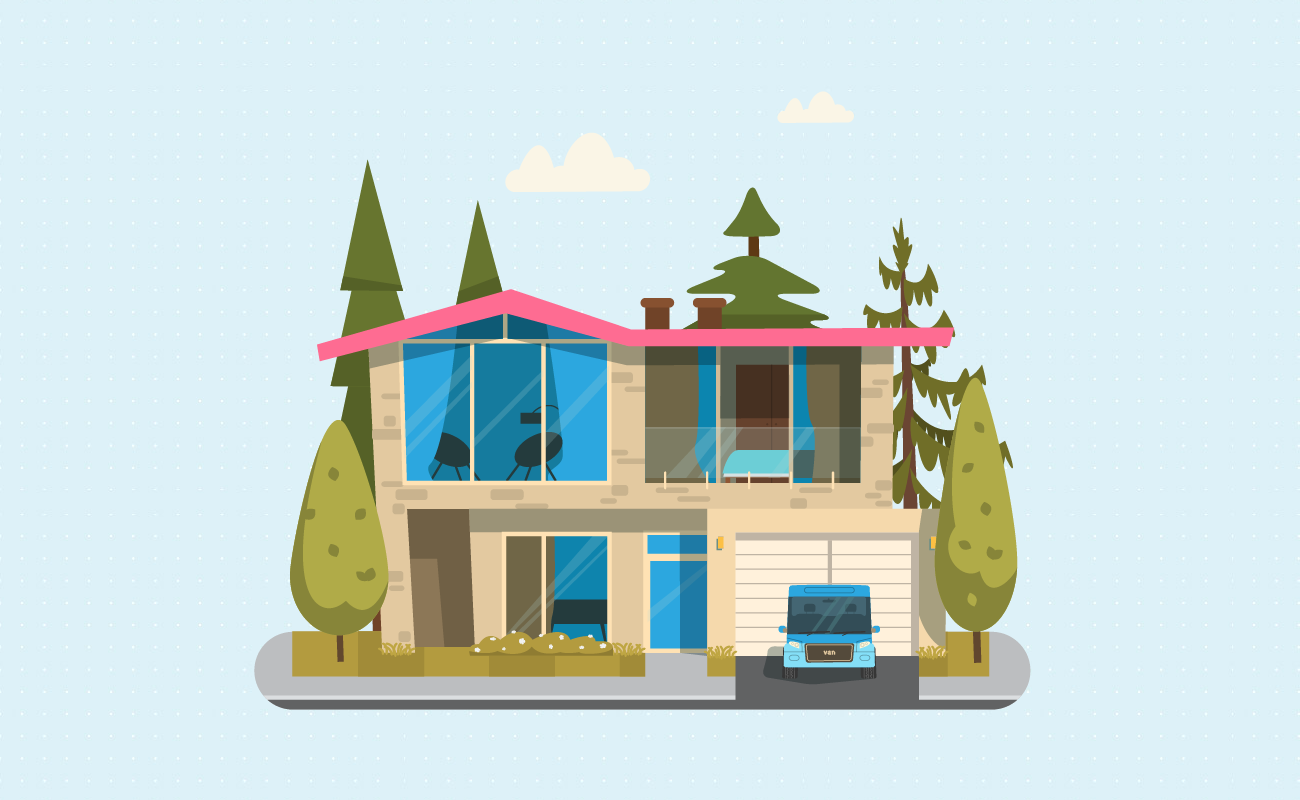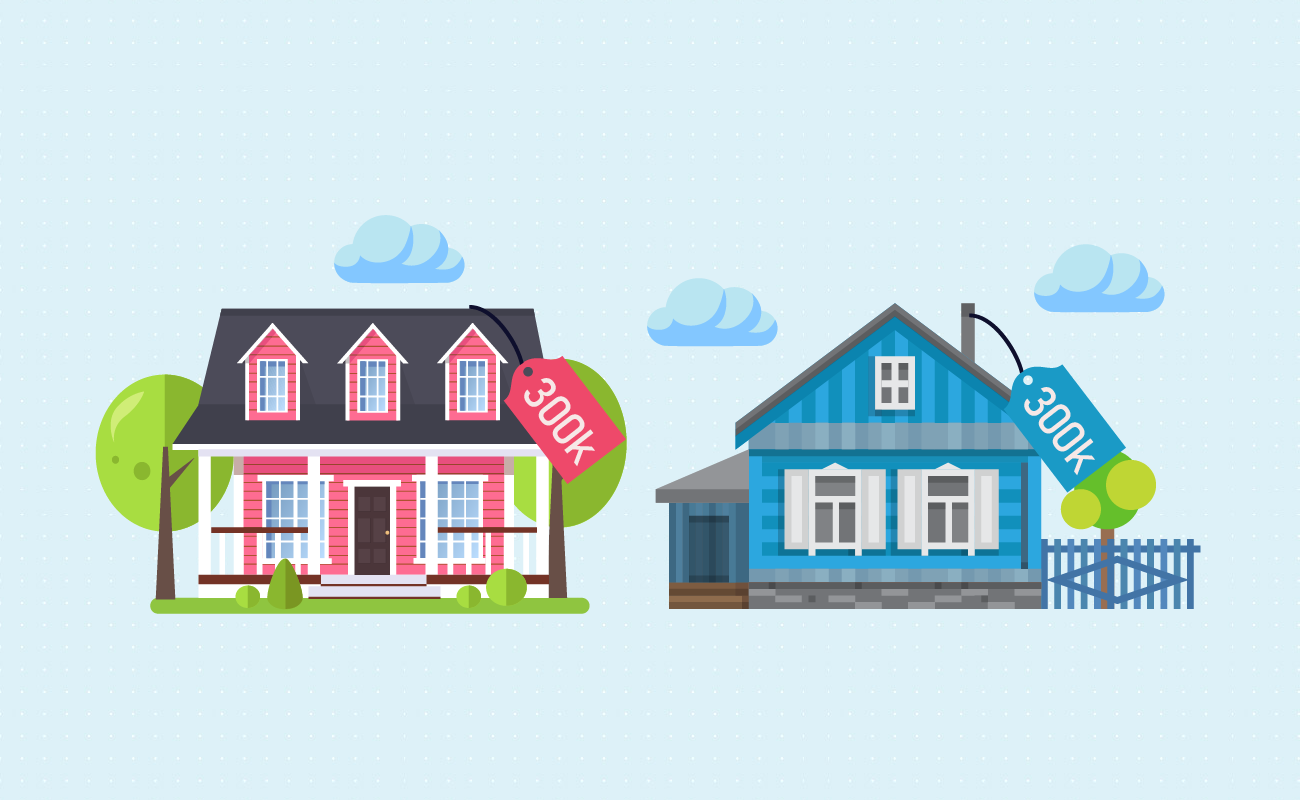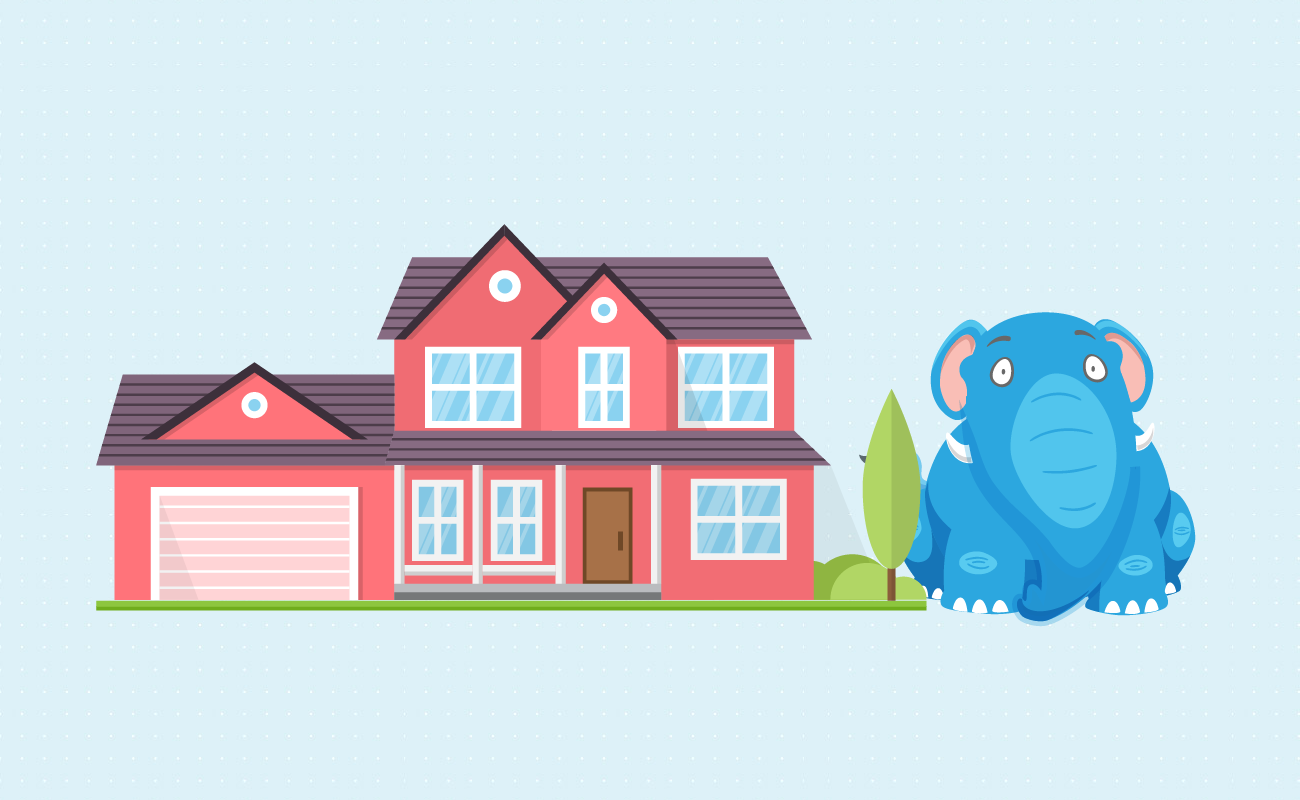Fixed Rates
30 yr
25 yr
20 yr
15 yr
10 yr
Compare Terms
Compare Rates
Real APR
Adjustable Rates
Qualification
Affordability
Renter Affordability
Rent vs Buy
Price per Square Foot
Jumbo
Home Sellers
 Home Loan Amortization Calculator
Home Loan Amortization CalculatorThis calculator helps home buyers estimate their monthly principal & interest payment along with the full PITI mortgage payment when buying a home using a fixed rate mortgage loan of any duration. Enter the home price, down payment, APR, loan term & other homeownership expenses and we will estimate the cost of homeownership. Once you have entered all of your details you can use the button at the bottom of the calculator to create a printable amortization table.
Guide published by Jose Abuyuan on August 18, 2020

When you apply for a fixed-rate mortgage, you choose predictability. Your total and monthly payments will be constant. Besides making it easier to plan payments, this choice also helps you weather the risks of the market. You’ve made the safe, sensible choice for you and your family in the long run.
This doesn’t mean that there are no other options to save money. By understanding amortization, you have a better grasp at the costs of your mortgage. This will guide you in looking for the best ways to pay your mortgage faster.
Your mortgage payments also do not exist in a vacuum. A lot of factors can influence both the size of your monthly payments and the impact it has on your finances. It is important to examine each of them before signing on. Your choices at this stage can influence the cost of your mortgage each month and over its lifetime.
Mortgages gave their name to the term amortization. This system distributes payments evenly across the life of a loan. The final costs of an amortized loan are fixed over their repayment period, which makes them more affordable for many buyers. These are often used to buy high-value assets such as houses and cars.
Amortization creates a sense of stability for borrowers. When you receive a 30-year fixed-rate mortgage, for instance, you can expect to pay it off in exactly 30 years. You also pay the same amount each month. This predictability comes with several advantages. Unless you lose your job, you needn’t worry about coming up short. You’ll know how to plan your finances to expect the same payment each month. Thus, you won’t be seeing many unpleasant surprises down the line.
Today, 30-year fixed-rate mortgages comprise the lion’s share of the market, and not without reason. This option has lower monthly payments, which make them affordable to more potential buyers. The costs might be higher in the long run, but it is a trade-off many people are willing to live with for the moment.
Your mortgage payment is divided into two parts:
The most important of these is the P + I payments. This is the main part of your mortgage and represents the amount that goes toward paying your lender. The principal is the actual amount you borrowed. Interest, meanwhile, is the amount your lender charges for borrowing the money.
Interest payments are how lenders make money. It also acts to hedge against risks. The riskier the borrower is, the higher the interest must be to make it worthwhile to the lender. Thus, lenders often slap higher interest rates on borrowers with lower credit scores.
How interest payments are calculated might vary between the type of loan. However, they all follow the same basic formula. Interest is determined by multiplying the principle with a pre-agreed rate and the term. Long payment terms and high rates increases the amount of interest you pay. This also works in reverse. Paying more money toward your principal, shortening your term, or reducing your rate can lower your interest payments.
Amortization distributes the payments across equal increments through the term of a loan. These payments cover both interest and principal, but they are not distributed equally. In the early years of the mortgage, your P + I payments are earmarked toward the interest. Toward the end of your loan, it mostly goes to the principal.
The lifetime monthly payments for amortized loans are calculated with the following formula:
A = P * ( i(1 + r)ⁿ ) / ((1 + r)ⁿ – 1)
Where:
A = periodic monthly payment
P = principal
r = monthly interest rate
n = term (in months)
Your monthly interest rate is derived by dividing your annual percentage rate (APR) by 12. Meanwhile, your interest payments are calculated with this equation:
I = B * r
Where:
B = current principal balance
I = monthly interest
r = monthly interest rate
Your monthly payment first pays for your interest. Anything else that remains is used to pay down the principal. This starts off small, but grows over time. As time goes by, more of your mortgage goes toward your principal until most of your principal is paid down.
Let’s see how this works in real time. For this example, you take out a 30-year fixed-rate mortgage in August 2020 that costs $248,000. It has an APR of 3 percent (or 0.25 percent monthly). Here’s what your monthly payment would be:
Loan amount: $248,000
Interest rate: 3% APR
Loan term: 30 years (360 months)
A = $248,000 x (0.0025 x (1 + 0.0025)^360 ) / ((1 + 0.0025)^360 – 1)
A = $248,000 x (0.0025 x (1.0025)^360) / ((1.0025)^360 – 1)
A = $248,000 x (0.0025 x 2.4568) / (2.4568 – 1)
A = $248,000 x (0.0061 / 1.4568)
A = $248,000 x (0.0042)
A = $1,041.60
Your total P + I payment would be $1,041.60. At the start of your mortgage, your monthly interest would be as follows:
I = $248,000 x 0.0025
I = $620
Your first mortgage payment will be $620. Subtract this from your monthly payment, and you’ll be left with $465 for principal. Your new principal balance is now $309,535. Let’s see how this goes on for the next 12 months:
| Month | Principal Balance | Monthly Payment | Interest Payment | Principal Payment | Remaining Balance |
|---|---|---|---|---|---|
| September 2020 | $248,000.00 | $1,041.60 | $620.00 | $421.60 | $309,535.00 |
| October 2020 | $309,535.00 | $1,041.60 | $618.95 | $422.65 | $247578.40 |
| November 2020 | $247578.40 | $1,041.60 | $617.89 | $423.71 | $247155.75 |
| December 2020 | $247155.75 | $1,041.60 | $616.83 | $424.77 | $246732.04 |
| January 2021 | $246732.04 | $1,041.60 | $615.77 | $425.83 | $246307.27 |
| February 2021 | $246307.27 | $1,041.60 | $614.70 | $426.90 | $245881.43 |
| March 2021 | $245881.43 | $1,041.60 | $613.64 | $427.96 | $245454.54 |
| April 2021 | $245454.54 | $1,041.60 | $612.57 | $429.03 | $245026.57 |
| May 2021 | $245026.57 | $1,041.60 | $611.49 | $430.11 | $244597.54 |
| June 2021 | $244597.54 | $1,041.60 | $610.42 | $431.18 | $244167.43 |
| July 2021 | $244167.43 | $1,041.60 | $609.34 | $432.26 | $243736.25 |
| August 2021 | $243736.25 | $1,041.60 | $608.26 | $433.34 | $242870.65 |
The above is a small sample of what would be your amortization table. The full table will track your P + I costs over the course of 360 months, which is the full 30 years.
Your amortization table is more than a look into how your mortgage works. It will reveal a lot about the total costs of your mortgage, too. At the end of an amortization table is a tally of your total costs, which includes your interest payments. The tally will reveal how steep the costs of a 30-year mortgage is.
For our second example, let’s assume you take out a mortgage for a home in a reasonably priced neighborhood. The home’s priced at around $290,000. To cut down on costs, you pay 20 percent in a down payment, which lets you bypass private mortgage insurance. You also paid for your closing costs out of pocket.
Let’s see the difference between the two main types of fixed-rate mortgage:
| 30-Year Mortgage | 15-Year Mortgage | |
|---|---|---|
| Principal (Minus 20% Down) | $232,000.00 | $232,000.00 |
| Rate (APR) | 3% | 2.5% |
| Term | 30 years (360 months) | 15 years (180 months) |
| P + I Payments | $978.12 | $1,546.95 |
Notice that the APR for the 15-year mortgage is lower by half a percentage point. However, the monthly payment for this shorter term is higher compared to a 30-year term.
Many American homebuyers choose 30-year mortgages because they cost less each month. It blends into the budget better and leaves some cash to spare. But let’s look at how much they differ in total interest cost:
| 30-Year Mortgage | 15-Year Mortgage | |
|---|---|---|
| Total Interest | $120,123.69 | $46,451.17 |
You’ll spend $73,672.52 more with a 30-year fixed-rate mortgage compared to choosing the 15-year fixed mortgage. The best choice will, however, depends on your current financial situation. After all, your financial state might benefit from having more breathing room in the interim.
Amortization guarantees a fixed amount of interest at the end of your loan’s term. Your minimum mortgage payments will not cause your debt to spiral out of control. While paying extra is a requirement for your credit card, it is an option for your mortgage. One thing they have in common is that extra payments work in your favor.
By paying extra each month, you can save money on interest payments by whittling down your principal. Extra payments can also shorten the time it takes to pay off your loan. Hence, they are also called accelerated payments. People choose to pay down debts to get rid of them faster.

Consumer debts such as credit cards have steep interest charges. Always pay off your other debts before considering extra mortgage payments. In the long run, getting rid of high-interest debt will help free up your cash flow.
Let’s look at the amortization table for our 30-year loan from our second example. The table below outlines your payments around January 2024. At that point, you would’ve made around 40 payments since your loan was finalized:
| Payment | Date | Current Balance | Monthly Payment | Interest Payment | Principal Payment | Remaining Balance |
|---|---|---|---|---|---|---|
| 41 | 01/11/2024 | $215,273.72 | $978.12 | $538.18 | $439.94 | $214,833.78 |
| 42 | 02/11/2024 | $214,833.78 | $978.12 | $537.08 | $441.04 | $214,392.74 |
| 43 | 03/11/2024 | $214,392.74 | $978.12 | $535.98 | $442.14 | $213,950.60 |
| 44 | 04/11/2024 | $213,950.60 | $978.12 | $534.88 | $443.24 | $213,507.36 |
| 45 | 05/11/2024 | $213,507.36 | $978.12 | $533.77 | $444.35 | $213,063.01 |
| 46 | 06/11/2024 | $213,063.01 | $978.12 | $532.66 | $445.46 | $212,617.55 |
| 47 | 07/11/2024 | $212,617.55 | $978.12 | $531.54 | $446.58 | $212,170.97 |
| 48 | 08/11/2024 | $212,170.97 | $978.12 | $530.43 | $447.69 | $211,723.28 |
| 49 | 09/11/2024 | $211,723.28 | $978.12 | $529.31 | $448.81 | $211,274.47 |
| 50 | 10/11/2024 | $211,274.47 | $978.12 | $528.19 | $449.93 | $210,824.54 |
| 51 | 11/11/2024 | $210,824.54 | $978.12 | $527.06 | $451.06 | $210,373.48 |
| 52 | 12/11/2024 | $210,373.48 | $978.12 | $525.93 | $452.19 | $209,921.29 |
| Total | 2024 | $11,737.44 | $6385.01 | $5352.43 | $209,921.29 |
Now, let’s see what happens if you paid an extra $100 each month:
| Payment | Date | Current Balance | Monthly Payment | Interest Payment | Principal Payment | Remaining Balance |
|---|---|---|---|---|---|---|
| 41 | 01/11/2024 | $215,273.72 | $,1078.12 | $538.18 | $539.94 | $214,733.78 |
| 42 | 02/11/2024 | $214,733.78 | $,1078.12 | $536.83 | $541.29 | $214,192.50 |
| 43 | 03/11/2024 | $214,192.50 | $,1078.12 | $535.48 | $542.64 | $213,649.86 |
| 44 | 04/11/2024 | $213,649.86 | $,1078.12 | $534.12 | $544.00 | $213,105.86 |
| 45 | 05/11/2024 | $213,105.86 | $,1078.12 | $532.76 | $545.36 | $212,560.51 |
| 46 | 06/11/2024 | $212,560.51 | $,1078.12 | $531.40 | $546.72 | $212,013.79 |
| 47 | 07/11/2024 | $212,013.79 | $,1078.12 | $530.03 | $548.09 | $211,465.71 |
| 48 | 08/11/2024 | $211,465.71 | $,1078.12 | $528.66 | $549.46 | $210,916.25 |
| 49 | 09/11/2024 | $210,916.25 | $,1078.12 | $527.29 | $550.83 | $210,365.42 |
| 50 | 10/11/2024 | $210,365.42 | $,1078.12 | $525.91 | $552.21 | $209,813.21 |
| 51 | 11/11/2024 | $209,813.21 | $,1078.12 | $524.53 | $553.59 | $209,259.63 |
| 52 | 12/11/2024 | $209,259.63 | $,1078.12 | $523.15 | $554.97 | $208,704.66 |
| Total | 2024 | $12,937.44 | $6368.38 | $6569.06 | $254,0781.18 |
Big things start to happen once you start adding an extra $100 each month to your mortgage. Within two months, your principal payments begin to exceed your interest payments. This doesn’t seem much in the first few months, of course. But over time, it pays off well.
As long as they stay consistent, extra payments can help you save on interest in the long term. You can even save more money if you add an extra month’s worth of payments at the end of the year on top of your extra monthly payments.
| Current | Current + $100 Extra | Extra month + $100 Monthly Extra | |
|---|---|---|---|
| Monthly P + I payment (or equivalent) | $978.12 | $1,078.12 | $1,439.76 |
| Remaining years | 26.7 | 23.1 | 20.6 |
| Monthly payments eliminated | 0 | 43 | 72.6 |
| Interest savings | 0 | $14,408.13 | $24,276.62 |
| Total payment savings: | 0 | $42,059.22 | $71,026.66 |
By making extra monthly payments, you’ve saved between $14,408.13 and $24,276.62 on your mortgage. This isn’t as big of a savings compared to a 15-year term, of course. But it fits better into your budget and you still spent less than you would have. If you couldn’t afford a 15-year mortgage on the onset, you can still save money.
In the above example, you waited 40 months before adding extra payments. This allows you to avoid prepayment penalties. Since 2014, penalties remain in place for up to three years. Besides waiting them out, you can avoid penalties by choosing a mortgage product without a prepayment penalty.
Refinancing involves replacing your current mortgage with a new loan. It is a pricey, time-consuming endeavor, but one with the biggest rewards. You can save a lot of money if your new mortgage has a shorter term and a rate two points lower than your prior APR. If you can afford a higher monthly payment and the prevailing rates are low, this might be the best option for you. This is, however, not the easiest of option to take. To qualify for refinancing, you would need a credit score of at least 620, preferably higher. You might not be eligible for the best rates if your credit score was too low. You also need to cover the closing costs, which can be steep. Do the math and see if this option is right for your current financial situation.Refinancing
![]()
Your P + I payments are not the only thing to consider when calculating mortgage costs and savings. We must look at your entire mortgage payment to determine your budget. Your monthly payments also include escrow costs. These are a set of housing expenses that your lender pays on your behalf:
Most mortgages demand that you open an escrow account alongside your mortgage. Having your lender pay these extra costs is a convenient way of simplifying your budget. You don’t need to worry about these costs since they’re paid alongside your mortgage.
Moreover, there are other expenses that affect the costs of home ownership. These don’t only impact the size of your mortgage and escrow costs. Such costs also affect your budget while you live there.

Where you choose to live will influence how much you spend on your home. While cliché, the phrase “location, location, location” is important. You must strike the balance between the property’s costs and the convenience of living there.
The median home price in the U.S. as of June 2020 is $295,300, according to the Federal Reserve Bank of St. Louis. This is up from figures recorded in April the same year ($288,700). It is a significant jump from the $248,857 recorded by Zillow the previous year. But not all housing markets are priced equally. There are states where housing costs are much less exuberant. Having $300,000 can buy you a mansion in some markets, and a cramped house in other locations.
Some locations will be pricier than others by nature. In general, homes will be expensive in the so-called designated high-cost areas. These include coastal towns and the cores of major metropolitan areas.
Thus, most people look for new homes in suburban areas, where land costs are less exuberant. But be careful when choosing homes in places where property is cheaper. Underserved suburbs may be too far away from workplaces, schools, and shopping areas. Can your lifestyle and budget afford that much driving?
Next, think twice before going big when real estate prices are cheap. The size and location of your new home can influence your escrow payments. The larger your property, the bigger the tax bracket it falls under. Some places also have higher property taxes than others. Fancy homes cost more to repair and rebuild, and thus have higher insurance premiums. Homes in areas prone to specific disasters will also come with expensive insurance coverage.
The Subprime Mortgage Crisis left an indelible mark on people’s approach to housing. Applying for subprime mortgages is now seen for what it is: a huge gamble on both the lender and the seller. Today, even subprime mortgages are more difficult to apply for. This has also changed the way people looked at housing. In the ’80s through the early 2000s, people started seeing houses as disposable items. People bought and renovated oversized houses with the intention to sell them. This turned out to be a bad investment. More than a decade on, the garish, expensive houses from this era remain unpopular with buyers.Learning From the Past
![]()

Some homes have values far out of reach of conventional mortgages. Jumbo loans exist to fill this void in the market. These exceed the conforming loan limit set by the federal government. Thus, they cannot be backed by Freddie Mac or Fannie May and are riskier for the lender in the short term.
Jumbo loans have higher-than-average interest rates to compensate for the lender’s increased risks. Thus, most buyers who get them have higher incomes. Jumbo loans are difficult to apply for, even for people with means. To qualify for a jumbo mortgage requires the following:
These mortgages are usually reserved for people who buy luxury homes. You would almost certainly need jumbo mortgages if the home or land price is high enough. The alternative would be to pay a higher down or to finance the property with two mortgages.

A commonly overlooked part of home ownership is the cost of upkeep. If you want to keep your home livable, you’ll need to spend considerable money to keep it in good shape. You’ll also need to pay a little extra if you want it to look its best. The costs of maintenance and utilities will linger on long after your mortgage. Many retirees have considered downgrading their homes for this reason.
Some homes cost more to maintain than others. A mansion is going to cost more on upkeep than an average family home. An ornate façade and a well-manicured garden generates more maintenance costs. On the opposite end, smaller, simpler homes cost less to heat, maintain, and repair. Tiny homes became a pop-culture phenomenon in the past decade for this reason.
Many people usually parse utility costs as distinct from home ownership. In truth, they are tied on a fundamental level. Homes in advanced states of disrepair are difficult to cool in the summer and heat in the winter. The same goes for homes that are huge or poorly designed. Clumsy, inefficient architecture will greatly add to your heating and cooling costs.
Not only are smaller homes cheaper, they also cost less to heat and cool. Buy a home with the right amount of space for your family. A modest home can be just as comfortable without costing you a small fortune on maintenance.
Don’t be fooled by outward appearances. Many so-called executive homes often lack the artisanship of other houses. These have gaping design flaws and inefficiencies hidden in their bells and whistles. Exceptionally shady builders and sellers may have even cut corners using substandard materials. Not all design flaws are obvious. You can still end up with a slipshod home if you don’t look deep enough. Have your home inspected before finalizing the sale. This can help you identify potential problems and judge if the house is worth buying. Before you move in, make sure you address the most important areas for improvement.A Veneer of Quality
![]()
The fewer payments tied to your mortgage, the better it will fit on your budget. The key is to reduce all unnecessary add-ons to your principal. The more you pay out of pocket, the smaller your principal will be. And this includes mortgage insurance. This product exists solely to benefit your lender. You gain nothing from shouldering this cost over the lifetime of your loan.
There are two types of mortgage insurance. The first, private mortgage insurance (PMI), are for conventional mortgages. By law, the coverage lasts until your loan-to-value ratio reaches 78 percent. All lenders waive the costs of PMI when your down payment is at least 20 percent.
Mortgage insurance premiums (MIPs) protect home loans backed by the Federal Housing Authority. There are several key differences between the two. On top of your monthly payments, it also demands a one-time lump sum payment that’s 1.75 percent of the mortgage’s value. They also last much longer than PMIs. They expire in 11 years for 15-year mortgages. For 30-year terms, they remain in place through the life of the mortgage. Unlike PMI, MIPs cannot be waived with a high-enough down payment.
Each component of your mortgage P + I payment contributes to your overall costs. Keep them as low as you can on the onset. Try to qualify for the lowest mortgage rates by improving your credit score. Meanwhile, pay as much of the down payment as you can on the onset. Remember: the more you pay today, the more you save tomorrow.
Consider delaying your decision to buy until you can cover almost all your closing expenses out of pocket. In the meantime, you can cut down your debts, improve your cash flow, and save up a large-enough down payment. Waiting a little longer could also mean that you can afford the best rates. You might think that you’re missing out on deals today, but this will save you more money in the long run.
Your P + I payments are the most important aspect of your mortgage payment, but they’re far from your only expense. Consider your escrow payments when looking for the right mortgage for your home. This will be important both in planning your budget and hunting for the right home. The ideal house will not cost you as much in taxes and insurance premiums.
Finally, reconsider your house goals. As dreamy as it looks on TV, a tacky mansion might become a nightmare to your finances. Choose a house that not only meets all your family’s needs but also one that costs less over a lifetime.
Jose Abuyuan is a web content writer, fictionist, and digital artist hailing from Las Piñas City. He is a graduate of Communication and Media Studies at San Beda College Alabang, who took his internship in the weekly news magazine the Philippines Graphic. He has authored works professionally for over a decade.